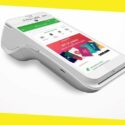The Benefits of Tracking Your Spending: Tools and Tips

Money can slip through fingers like sand. For many people, the day ends with little clue how it happened. Grocery store runs, online purchases, and extra coffees add up fast. Tracking spending puts a stop to this mystery.
It gives full control over where each dollar goes, shining a light on the daily habits that shape personal finances. This practice brings calm, helps to avoid waste, and supports steady progress toward goals. The following sections reveal the wide benefits of tracking every expense and highlight tools and smart habits that can help build a strong foundation for financial health.
How Tracking Spending Improves Financial Well-Being
Looking at the truth on the page—money in, money out—changes how people relate to their wallets. Tracking puts the facts front and center. This removes guesswork and makes it easier to spot both wasteful trends and wise choices. Those facts help stop habits that sneak up and drain savings.
Financial stress often comes from not knowing where money stands. Tracking gives a sense of control and peace, cutting down on worry. As people keep tabs on their spending, they feel more confident. They can spot trouble areas, make clear plans, and set realistic goals. This mindset is key to long-term financial health. No more flying blind—tracking spending transforms confusion into clarity.
A running record of expenses acts like headlights on a nighttime road. It makes every purchase visible and tells a clear story. Seeing where each dollar goes brings awareness to routine decisions. This awareness takes small, careless habits like quick lunches, impulse picks, forgotten subscriptions and puts them under a magnifying glass.
Accountability soon follows. With a running record in hand, old excuses lose strength. Coffee habits, streaming upgrades, and delivery charges must all get a line in the ledger. The numbers show whether spending matches personal values and long-term hopes. When habits stay in check, results show up in better savings, steadier bills, and more peace at month’s end.
Untracked spending can snowball. It starts as an extra dinner out or a few online clicks. Soon enough, there is less money left for bills, and credit card balances creep up. Consistent tracking slams the brakes on this cycle. By logging expenses as soon as they happen, patterns surface before they become real problems.
People can spot when costs start creeping up or when paychecks don’t seem to stretch as planned. Quick course corrections stop debt from piling up. Tracking defuses the stress of surprise bills or overdrafts and keeps confidence high, even as life throws curveballs.
Most people have dreams that hinge on savings, like a trip, a car, a first home, or retirement comfort. Tracking spending reveals where cuts can free up cash. Small savings on lunches or subscriptions snowball over weeks and months.
“A dollar tracked is a dollar that can be set aside,” says Jack Doshay. “Tracking turns ‘leftover’ money from a vague hope into a planned goal. By watching where every cent lands, people can reroute cash toward big dreams.”
Consistent habits help build emergency funds and kickstart investments. A simple habit can turn wishful thinking into real progress, one step at a time.
Effective Tools and Tips for Tracking Your Spending
Tracking every dollar no longer means saving every receipt or recording each purchase by hand. New tools make the process quick, painless, and even fun. Yet for many, old-school methods still work best. The right tool is the one that fits both lifestyle and comfort level.
No two spenders are alike. The key is picking a method that makes tracking easy—and sticking to it long enough to build lasting habits.
Digital apps have changed how people watch their money. Leading options pull in data from bank accounts and cards. They sort spending into clear categories, show trends, and send alerts when budgets get close to the edge.
Apps like Mint, YNAB (You Need a Budget), and PocketGuard make tracking simple. Each expense is logged automatically. Users get a daily snapshot of spending habits. These tools provide clean charts, list recurring fees, and let users set savings targets.
For those who worry they’ll forget to log an expense, automation is key. Many apps can show every card charge in real time. This helps keep spending top-of-mind, even on busy days.
For some, old tools work best. Spreadsheets, whether on a laptop or printed out, let users build custom templates. Rows and columns make it easy to sort costs by week, month, or type. They also give more control over how details are tracked.
Keeping a daily spending diary in a notebook offers another path. Writing each purchase by hand makes the process more mindful. This slows down decision-making and adds an extra filter before buying.
These methods fit those who like pen and paper, prefer privacy, or want to avoid new apps. Manual logging works well for people who want to process each entry and reflect on their spending as they go.
Not every tool matches every lifestyle. The most important factor is ease. Fast, simple tracking reduces friction and sets the stage for repeat habits.
People who use cash more often might prefer notebooks or envelopes, while heavy card users can benefit from apps with strong automation. Security matters, so trusted brands and tools with clear privacy rules are best.
Comfort with technology, willingness to share account data, and personal preference all weigh into the choice. Picking a method that fits feels less like a chore and more like a natural part of daily life.
Tracking only works when it becomes routine. Setting a daily reminder can help. Some spend a few minutes each night logging receipts. Others set a time each week to review and plan.
Regularly checking bank statements, looking out for small leaks, and reassessing spending plans each month will keep progress on track. Adjusting categories or limits as life changes can keep motivation high.
Reviewing results at the end of each month feels satisfying. It shows growth, uncovers areas to tweak, and gives a sense of progress. Treating tracking like brushing teeth such as a quick, daily task makes success much more likely. Writing down a goal or sharing progress with a friend adds another layer of motivation and keeps the focus sharp.
Tracking spending is not a task reserved for finance experts. Every person benefits from knowing where money goes. Clear records bring peace, support dreams, and close the door on bad habits.
With a host of smart tools and simple habits, anyone can build a new relationship with money, one with less stress and more control. No matter which method fits best, the first step is the most important. Start today with a notebook, a spreadsheet, or an app. Soon, the numbers will tell a new story of strength, savings, and financial freedom.
Recommended For You
Why Is Security For The Loan Important In LAP?
Most Inside
Most Inside offers high-quality recommendations and valuable updates to enhance all aspects of your life, providing premium guidance and enriching experiences.




